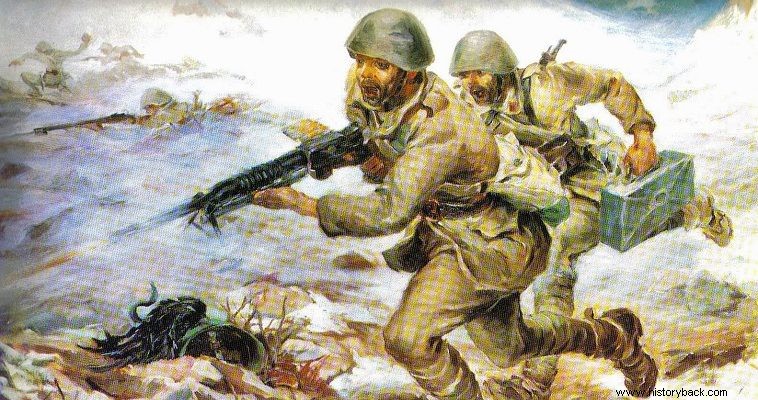
The infantry company of the Greek Army in 1940 extended four platoons. It also had a command team and battle transports. Consequently, the strength of a full-strength company of the time was close to 200 men, a large number even by the standards of the time, which, however, made up for the lack of group weapons.
Each platoon had three battle groups. The infantry company had as its strongest means of fire the 12 machine guns of the platoons of. Also, on occasion, the gunners of the platoons could be gathered in a group to carry out special missions. Beyond these, however, it did not have light mortars, as was the case in all other European armies, nor anti-tank means.
Provision was made for the infantry companies to be supplied with anti-tank rifles and 1,786 Boys 14mm anti-tank rifles were ordered in Britain, but few of these were delivered, leaving a huge gap in the ability of the Greek infantry to deal with tanks , which, however, was partially compensated by Greek ingenuity.
Access and Battle Formations
Depending on the mission it undertook, the battalion had machine guns or mortars or artillery at its disposal. Lacking mortars and organic machine guns the company relied on maneuver to overcome the enemy. The usual attack formation was with two platoons in front and two in direct support. Consequently, the company could act, basically, on two axes. More rarely, three platoons were available in the first echelon, for action on three axes.
During the defense, each captain had his platoons, depending on the tactical situation, either on the line of resistance linearly, or kept some of them as a reserve in order to carry out direct counter-attacks as long as the enemy was entering the friendly location.
Depending on the situation, the captain could form groups of men for special missions, such as clearing enemy positions with grenades. However, the captain always had to keep a small reserve force under his direct command so that he can intervene in every contingency of the match.
Each company, as it was said, was the mirror of its captain and no company within this regiment was the same as another. The captain was not only a commander but also the "father" of his men.
The company could be deployed with its platoons aligned – line – staggered to one of the sides, in a trapezoid or rhombus formation. The front of the company could not exceed 400 m In the approach phase the company could also be formed in successive platoons – one behind the other, or in a 'double phalanx', with the platoons in pairs, front and rear.
Attack
During the attack, the company should, in principle, obtain the superiority of fire over the enemy. For this purpose the captain had one or two platoons or elements from more or all of his platoons. He could, for example, create a base of fire by massing the machine guns of three platoons and maneuver with a full platoon and the other elements of the rest.
The rule was to deploy one machine gun or machine gun for every 50 m of front. Of course the rule applied on a case-by-case basis, depending on the terrain and the disposition of the enemy.
On a narrow attack front the company usually deployed one platoon as a base of fire and maneuvered with the other three. On a front of medium width the company deployed two platoons as a base of fire and acted with the other two, while on a wider front three platoons were deployed as a base of fire and the fourth was active.
The captain, in any case, had to be in the positions of his or her reserve platoons together with the company command team so that he could immediately intervene in the fight, correct mistakes or take advantage of any opportunity that arose.
Against an enemy in a fortified position the company's attack front was not to exceed 200 m. But in this case the company was scaled up to a depth of 400 m.
During the defense the company occupied a sector no larger than 400 m under ideal conditions. Depending on the situation, the captain escalated his order in depth always keeping in mind that he had to form an impenetrable barrier in front of the enemy with the fire of his platoons.
Machine gun companies
A different case was the machine gun companies of the infantry and machine gun battalions. The machine gun company had a command team, three machine gun platoons, each with two squads and battle transports . In total the machine gun company had 12 machine guns, which gave it incredible killing power. The machine gun companies of the infantry battalions were organic sub-units of the respective battalions.
It was usually assigned to one machine gun platoon in each infantry company of the battalion in direct support. However, depending on the situation, the machine gun company could be allocated entirely to an infantry company or remain under the control of the battalion commander. The machine gun team was designated as a "fire unit" and the platoon as a "combat unit".
The machine guns in the defense formed the skeleton of the friendly defensive arrangement. During the attack, the machine guns formed the skeleton of the friendly fire base, this time executing, depending on the terrain and the distance, direct or indirect fire. Also the machine guns could perform harassing shots of the enemy at the limits of their range.
